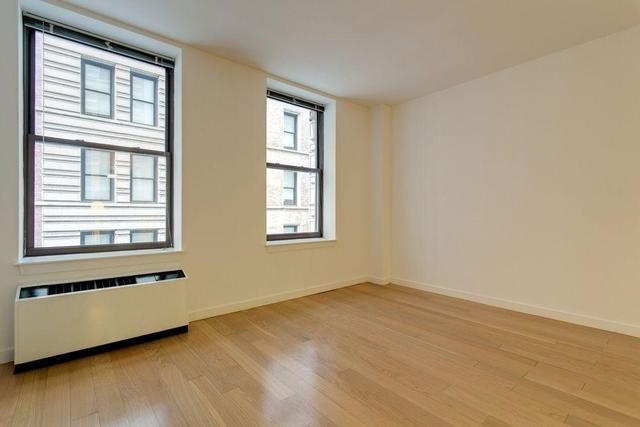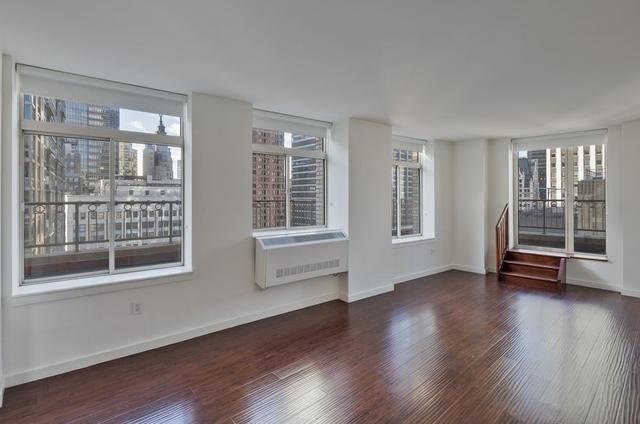
What Is A Sublease: How Does Subleasing Work
By: ROS Team
Subleasing is a concept that many people encounter when dealing with rental properties. It refers to the process of a tenant renting out their leased property to another person, known as the sublessee.
Understanding subleasing is essential for both tenants and landlords, as it involves additional legal and financial considerations. In this blog post, we will delve into the world of subleasing, exploring its definition, how it works, and the benefits and drawbacks associated with it.
What Is A Sublease?
Subleasing is a unique arrangement that occurs within the realm of renting properties. It involves a tenant, known as the sublessor, leasing out their rented property to another individual, called the sublessee.
Key Parties Involved In A Sublease
To grasp the concept of subleasing fully, it is crucial to understand the key parties involved and the distinctions between a lease and a sublease.
The primary parties involved in a sublease are:
- Sublessor (original tenant)
- Sublessee (new tenant)
- Landlord (original leaseholder)
The sublessor, who is already a tenant, becomes the lessor in the subleasing agreement.
The sublessee, on the other hand, is the individual who subleases the property from the sublessor.
The landlord, who holds the primary lease agreement with the sublessor, is involved in the subleasing process as they need to provide consent and may have certain requirements or restrictions.

Key Differences Between A Lease And A Sublease
It is important to note that a sublease differs from a lease in some key aspects. A lease is a contractual agreement between a tenant and a landlord, establishing a direct relationship where the tenant has exclusive rights to occupy the property for a specified period.
In contrast, a sublease creates a secondary lease agreement between the sublessor and the sublessee, where the sublessee occupies the property on behalf of the sublessor but does not have a direct contractual relationship with the landlord.
How Does Subleasing Work?
Subleasing involves several steps and considerations to ensure a smooth transition of the leased property from the sublessor to the sublessee.
Understanding the process is essential for both parties involved. Here is a breakdown of how subleasing typically works:

1. Reviewing The Original Lease Agreement
The sublessor must carefully review their original lease agreement to understand any restrictions or requirements related to subleasing.
Some leases may prohibit subleasing altogether, while others may require the landlord’s consent.
2. Obtaining Landlord’s Permission
If subleasing is permitted or requires the landlord’s consent, the sublessor should approach the landlord to seek approval.
This may involve providing information about the proposed sublessee, their background, and their ability to fulfill the lease obligations.
3. Finding A Sublessee
The sublessor is responsible for finding a suitable sublessee. This can be done through various means, such as advertising the property, reaching out to personal connections, or utilizing online platforms.
It is important to screen potential sublessees carefully to ensure they meet the requirements and will be reliable tenants.
4. Drafting A Sublease Agreement
Once a sublessee has been selected, a sublease agreement must be drafted. This agreement outlines the terms and conditions of the sublease, including the rental amount, duration, responsibilities, and any additional rules or regulations.
It is crucial to include provisions that align with the original lease and comply with local laws.
5. Conducting A Walkthrough And Documenting The Condition
Before the sublessee moves in, both parties should conduct a thorough walkthrough of the property to document its condition.
This helps ensure that any existing damages or issues are noted to avoid disputes later on. A checklist or a written agreement can be used to record the condition of the property.
6. Transferring Responsibilities And Rent Payments
Once the sublease agreement is signed, the sublessee assumes the responsibilities outlined in the agreement, such as paying rent and adhering to the terms of the lease.
However, the sublessor remains responsible to the original landlord for fulfilling the obligations under the primary lease.
Sublease Rights
When engaging in a sublease agreement, it is important for both the sublessor and sublessee to understand their rights within the arrangement.
Here are some key rights associated with subleasing:
1- Right to Occupy:
The sublessee has the right to occupy and use the leased property during the agreed-upon sublease period, as outlined in the sublease agreement.
2- Right to Quiet Enjoyment:
The sublessee has the right to enjoy the leased property without interference or disturbance from the sublessor or the original landlord, as long as they comply with the terms of the sublease.
3- Right to Reasonable Repairs:
The sublessee has the right to request and expect reasonable repairs to be addressed by the sublessor or the original landlord. This includes addressing any issues that affect the habitability or safety of the property.
4- Right to Privacy:
The sublessee has the right to privacy within the leased property. The sublessor or original landlord should provide reasonable notice before entering the premises, except in cases of emergencies or other authorized circumstances.
5- Right to Quiet Enjoyment:
The sublessor has the right to receive the agreed-upon rent from the sublessee for the duration of the sublease period, as outlined in the sublease agreement.
6- Right to Enforce Sublease Terms:
Both the sublessor and sublessee have the right to enforce the terms and conditions set forth in the sublease agreement. This includes ensuring that all obligations, such as rent payments and maintenance responsibilities, are fulfilled.
7- Right to Legal Recourse:
In case of any breaches or disputes, both the sublessor and sublessee have the right to seek legal recourse and pursue remedies available under the applicable laws. This can include filing a lawsuit, mediation, or arbitration, depending on the jurisdiction and the terms outlined in the sublease agreement.
Legal Considerations And Requirements
When engaging in subleasing, it is crucial to be aware of the legal considerations and requirements involved. These can vary depending on local laws, the terms of the original lease, and the landlord’s regulations.

Here are some important legal aspects to consider:
1. Local Laws and Regulations:
Familiarize yourself with the laws and regulations specific to your jurisdiction regarding subleasing.
Some areas may have specific rules governing subleasing, including restrictions on the duration of subleases or requirements for obtaining the landlord’s consent.
2. Restrictions and Limitations:
Review the original lease agreement to understand any restrictions or limitations on subleasing.
Some leases may prohibit subleasing entirely, while others may require the landlord’s consent. Violating these restrictions could lead to legal consequences or eviction.
3. Consent from the Landlord:
In many cases, obtaining the landlord’s consent is a vital requirement for subleasing. The landlord may request certain information about the proposed sublessee, conduct background checks, or require additional documentation.
It is important to follow the proper procedure and obtain written consent to ensure a legally valid sublease.
4. Sublease Agreement:
Draft a comprehensive sublease agreement that aligns with the original lease and complies with local laws. This agreement should clearly outline the rights, responsibilities, and obligations of both the sublessor and sublessee.
Seek legal advice or use standardized templates to ensure the agreement covers all necessary aspects and protects the interests of both parties.
5. Liability and Responsibility:
Clarify the allocation of liability and responsibility within the sublease agreement. Determine who is responsible for maintenance, repairs, utilities, and any damages that occur during the sublease period.
It is important to define the scope of each party’s obligations to minimize potential conflicts or disputes.
6. Documentation:
Keep thorough documentation throughout the subleasing process. This includes written consent from the landlord, copies of the sublease agreement, communication records, and any relevant receipts or invoices.
These documents serve as evidence and can help protect your rights in case of any disputes or legal issues.
7. Legal Advice:
If you are unsure about any legal aspects of subleasing or if your situation involves complex circumstances, consider seeking legal advice.
An attorney experienced in real estate and landlord-tenant laws can provide valuable guidance and ensure compliance with all legal requirements.
Benefits And Drawbacks Of Subleasing
Subleasing offers both benefits and drawbacks for the parties involved. Understanding these advantages and disadvantages can help individuals make informed decisions when considering subleasing as an option.

Here are some key benefits and drawbacks to consider:
Benefits For The Sublessor (Original Tenant):
Mitigating Financial Burden: Subleasing can provide a way for the sublessor to offset the cost of the rent. By subleasing the property, they can share or transfer the financial responsibility to the sublessee, helping to alleviate their financial burden.
Flexibility and Avoiding Lease Termination Penalties: Subleasing allows the sublessor to temporarily leave the leased property without breaking the lease.
This flexibility can be beneficial in situations where the sublessor needs to relocate or is unable to fulfill the lease term. It helps them avoid potential penalties or legal consequences associated with lease termination.
Benefits For The Sublessee (New Tenant):
Short-Term Housing Options: Subleasing offers individuals the opportunity to secure housing for a shorter period than a typical lease. This can be beneficial for students, professionals on temporary assignments, or those who need temporary accommodation for various reasons.
Potential Cost Savings: Subleases often come with a lower rental rate compared to the market average. This can be advantageous for sublessees seeking more affordable housing options, especially in high-demand areas where rental prices are typically higher.
Drawbacks And Potential Risks:
Limited Control and Potential Conflicts: Sublessees may have limited control over the property since they are not the direct tenants. They must adhere to the terms and conditions set by the original lease and the sublease agreement.
Conflicts may arise if there are differing expectations or if the sublessor does not fulfill their responsibilities.
Liability and Responsibility Concerns: The sublessor remains responsible to the original landlord for fulfilling the obligations under the primary lease.
If the sublessee fails to meet its responsibilities, such as paying rent or causing damages, the sublessor may be held liable. This can lead to financial and legal consequences for the sublessor.
FAQs
How Much To Charge For Sublease?
When subletting, it is common to charge around 70% to 80% of your regular rent. While you can ask for the full rent, potential sublessees often negotiate the rent down. It’s important to consider market rates and be open to reasonable negotiations to attract potential subletters.
Is Sublease Legal?
Yes, subleasing is generally legal, but it is subject to the terms and conditions set forth in the original lease agreement and local laws. It is important to review the lease agreement and seek the landlord’s consent, if required, before engaging in a sublease.
When Might A Sublease Become Necessary?
A sublease might become necessary when a tenant is temporarily unable to occupy or fulfill the obligations of their leased property. They may need to sublease the property to another individual in order to avoid breaking the lease or to offset the financial burden of rent during their absence.
Conclusion
Subleasing is a process in which a tenant leases their rented property to another individual, known as the sublessee. It involves understanding the rights and responsibilities of the sublessor, sublessee, and the original landlord. Subleasing offers benefits such as financial flexibility and short-term housing options, but it also comes with limitations and potential conflicts.
By navigating the subleasing process with knowledge of legal considerations and clear communication, individuals can effectively engage in subleasing and make informed decisions regarding their rental properties.








